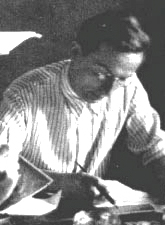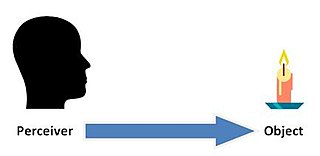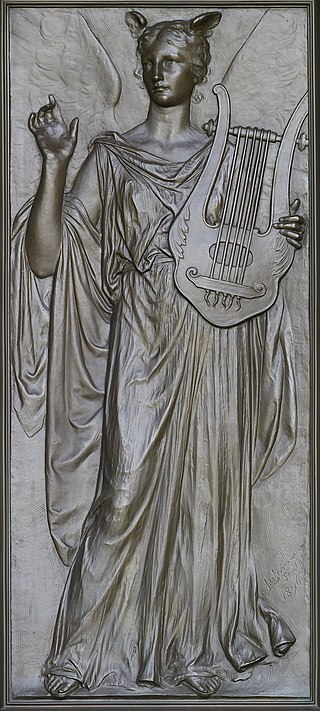Related Research Articles
Aesthetics is the branch of philosophy concerned with the nature of beauty and the nature of taste; and functions as the philosophy of art. Aesthetics examines the philosophy of aesthetic value, which is determined by critical judgements of artistic taste; thus, the function of aesthetics is the "critical reflection on art, culture and nature".

Manuel DeLanda is a Mexican-American writer, artist and philosopher who has lived in New York since 1975. He is a lecturer in architecture at the Princeton University School of Architecture and the University of Pennsylvania School of Design, where he teaches courses on the philosophy of urban history and the dynamics of cities as historical actors with an emphasis on the importance of self-organization and material culture in the understanding of a city. DeLanda also teaches architectural theory as an adjunct professor of architecture and urban design at the Pratt Institute and serves as the Gilles Deleuze Chair and Professor of Philosophy at the European Graduate School. He holds a BFA from the School of Visual Arts (1979) and a PhD in media and communication from the European Graduate School (2010).

Rudolf Arnheim was a German-born writer, art and film theorist, and perceptual psychologist. He learned Gestalt psychology from studying under Max Wertheimer and Wolfgang Köhler at the University of Berlin and applied it to art.

In philosophy of perception and epistemology, naïve realism is the idea that the senses provide us with direct awareness of objects as they really are. When referred to as direct realism, naïve realism is often contrasted with indirect realism.
In art history, formalism is the study of art by analyzing and comparing form and style. Its discussion also includes the way objects are made and their purely visual or material aspects. In painting, formalism emphasizes compositional elements such as color, line, shape, texture, and other perceptual aspects rather than content, meaning, or the historical and social context. At its extreme, formalism in art history posits that everything necessary to comprehending a work of art is contained within the work of art. The context of the work, including the reason for its creation, the historical background, and the life of the artist, that is, its conceptual aspect is considered to be external to the artistic medium itself, and therefore of secondary importance.

Mark Gerald Kingwell is a Canadian professor of philosophy and former associate chair at the University of Toronto's Department of Philosophy. Kingwell is a fellow of Trinity College. He specialises in theories of politics and culture. He writes widely in both scholarly and mainstream venues, and addresses specific topics in social justice, discourse ethics, aesthetics, film theory, philosophy of architecture and urbanism, philosophy of technology, and cultural theory.

GiacomoBarozzida Vignola, often simply called Vignola, was one of the great Italian architects of 16th century Mannerism. His two great masterpieces are the Villa Farnese at Caprarola and the Jesuits' Church of the Gesù in Rome. The three architects who spread the Italian Renaissance style throughout Western Europe are Vignola, Serlio and Palladio. He is often considered the most important architect in Rome in the Mannerist era.
Zenon Walter Pylyshyn was a Canadian cognitive scientist and philosopher. He was a Canada Council Senior Fellow from 1963 to 1964.

Imagination is the production of sensations, feelings and thoughts informing oneself. These experiences can be re-creations of past experiences, such as vivid memories with imagined changes, or completely invented and possibly fantastic scenes. Imagination helps apply knowledge to solve problems and is fundamental to integrating experience and the learning process. As a way of building theory, it is called "disciplined imagination". A way of training imagination is by listening to storytelling (narrative), in which the exactness of the chosen words is how it can "evoke worlds".

Villa Cornaro is a patrician villa in Piombino Dese, about 30 km northwest of Venice, Italy. It was designed by the Italian Renaissance architect Andrea Palladio in 1552 and is illustrated and described by him in Book Two of his 1570 masterwork, I quattro libri dell'architettura .Villa Cornaro is an example of one of Palladio's designs whose influence can be seen in later architecture. In efforts on preservation, Villa Cornaro has not always remained in the possession of the state.
Irving Singer was an American professor of philosophy who was on the faculty of the Massachusetts Institute of Technology for 55 years and wrote over 20 books. He was the author of books on various topics, including cinema, love, sexuality, and the philosophy of George Santayana. He also wrote on the subject of film, including writings about the work of film directors Ingmar Bergman, Alfred Hitchcock.

The arts or creative arts are a wide range of human practices of creative expression, storytelling, and cultural participation. They encompass multiple diverse and plural modes of thinking, doing, and being, in an extremely broad range of media. Both dynamic and a characteristically constant feature of human life, they have developed into innovative, stylized, and sometimes intricate forms. This is often achieved through sustained and deliberate study, training, and/or theorizing within a particular tradition, across generations, and even between civilizations. The arts are a vehicle through which human beings cultivate distinct social, cultural, and individual identities while transmitting values, impressions, judgements, ideas, visions, spiritual meanings, patterns of life, and experiences across time and space.
Robert Tavernor is an English Emeritus Professor of Architecture and Urban Design at the London School of Economics and Political Science (LSE), and founding director of the Tavernor Consultancy in London. He is a architecture historian and urbanist, who has published widely on architecture and urban design, including the impact of tall buildings on historic cities. His academic career includes being appointed to the Forbes Chair in Architecture at the University of Edinburgh at age 36.

New Classical architecture, New Classicism or Contemporary Classical architecture is a contemporary movement in architecture that continues the practice of Classical architecture. It is sometimes considered the modern continuation of Neoclassical architecture, even though other styles might be cited as well, such as Gothic, Baroque, Renaissance or even non-Western styles – often referenced and recreated from a postmodern perspective as opposed to being strict revival styles.
Herb Greene, is an American architect, artist, author and educator. Greene's architecture practice was based in Kentucky, Oklahoma and Texas. His built projects are known for an original interpretation of organic design.
Nick Zangwill is a British philosopher and honorary research professor at University College London and Lincoln University. He is known for his expertise on moral philosophy, and aesthetics.
David Edward Hemsoll FSA is a British art and architectural historian, specialising in Renaissance art and architecture, especially that of Rome, Florence, and Venice. He has published numerous catalogue essays and books that address architectural theory and the methodology of architectural design. He is currently (2020) Senior Lecturer in the Department of Art History, Curating and Visual Studies at the University of Birmingham.
Maurice Henri Léonard Pirenne was a Belgian scientist known for his work in vision physiology.
Baires Raffaelli is an Italian architect and author. He obtained his PhD from the Sapienza University of Rome with a focus on Architecture, Theory, and Planning. His professional interests include innovative architectural design, formal typology, and the integration of accessibility in architectural practices.
In architecture, form refers to a combination of external appearance, internal structure, and the unity of the design as a whole, an order created by the architect using space and mass.
References
- ↑ "Visual Studies welcomes Branko Mitrovic, Visiting Scholar | Visual Studies". vlst.sas.upenn.edu.
- ↑ "Branko Mitrovic | International Network for Theory of History". www.inth.ugent.be.
- 1 2 "Prof. Dr. Branko Mitrovic". www.kunstwissenschaft.tu.
- ↑ "Branko Mitrovic – NTNU". www.ntnu.edu.
- ↑ https://www.clarkart.edu/fellow/detail/branko-mitrovi [ dead link ]
- ↑ Mitrović, Branko (2007). Intellect in Iacopo Zabarella's interpretation of Aristotelian psychology (Doctoral thesis). ResearchSpace@Auckland, University of Auckland. hdl:2292/52057.
- ↑ "Rage and Denials: Collectivist Philosophy, Politics, and Art Historiography, 1890–1947 by Branko Mitrović".
- ↑ Mitrovic, Branko (21 October 2015). Visuality for Architects: Architectural Creativity and Modern Theories of Perception and Imagination. University of Virginia Press. ISBN 978-0-8139-3379-5.
- ↑ "Kim Williams reviews Branko Mitrovic's Learning from Palladio in the Nexus Network Journal vol. 7 no. 1 (Spring 2005)". www.emis.de.